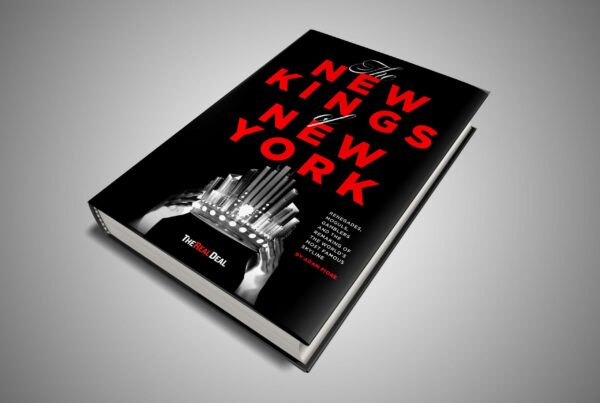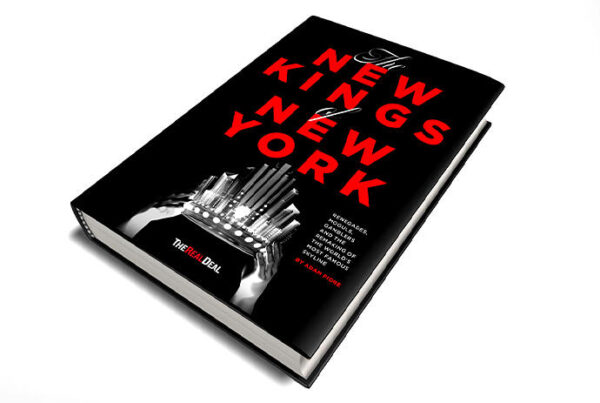 Days before the opening of New York City’s second-tallest building, workers in Navillus T-shirts scurried around the construction site.
Days before the opening of New York City’s second-tallest building, workers in Navillus T-shirts scurried around the construction site.
Their presence at SL Green’s trophy project, One Vanderbilt, raised eyebrows: Two months earlier, the concrete contractor’s CEO had been arrested on fraud charges. And before that, SL Green had fired Navillus, fearing it was going bankrupt. But the insurer of Navillus’ work had rehired the firm.
“We asked [Liberty Mutual] to step up and perform the work in lieu of Navillus. And then, of course, [it] just turned around and hired Navillus back,” said SL Green’s Robert Schiffer. “We actually didn’t lose a day of performance.”
Disputes between developers and contractors can spring from design changes, construction defects and allegations of wrongdoing. Many end up in court.
But termination is a last resort, generally done only if a contractor is liquidating, insolvent, stiffing subcontractors or cheating. Replacing a construction manager hikes costs, causes delays and all but guarantees litigation.
The further along a project is, the harder it is to dump a contractor. Any successor will have leverage in negotiating a price, said Simon Orner, a partner at Greenberg, Trager & Herbst who represents developers.
“They are cleaning up someone else’s mess, and they realize you are in a tough spot, so they’ll charge a premium for that,” he said. “It has to be a really toxic, nonfunctional situation.”
A surety thing
In July 2020, Navillus CEO Donal O’Sullivan and two other company executives were charged with scheming to avoid paying more than $1 million to union benefit funds. Navillus had previously emerged from bankruptcy and paid $25.7 million to settle claims that it used a shell company to avoid hiring union labor. Just before the bankruptcy proceedings started, AECOM Tishman, the construction manager on two of Navillus’ largest projects, including One Vanderbilt, had fired the firm, saying it risked insolvency.
A source familiar with the situation noted that Navillus helped itself by continuing to show up. “Navillus was wholly performing,” the source said. “They were on site and working on time.”
Liberty Mutual was Navillus’ surety on One Vanderbilt, having guaranteed its $135.9 million contract. The insurer had issued a performance bond for that amount in case Navillus botched the job.

Liberty Mutual and AECOM Tishman kept Navillus on. A Navillus attorney called this the best option for all, given the firm’s extensive experience on the jobsite. It also prevented lawsuits.
“If Tishman sought to have another contractor complete [One Vanderbilt] … Navillus would be forced to consider litigating with Tishman,” the attorney told the bankruptcy court. “Moreover, Liberty could assert an administrative claim against Navillus for any losses incurred under its bond.”
Michael Zisa, who chairs Peckar & Abramson’s surety and construction-related insurance practice, said it is not unheard of for a surety to rehire an axed contractor.
“Sometimes the most effective and most efficient manner, in terms of time and cost, is to utilize the bond principal to complete the project,” he said. At the time of the indictment, One Vanderbilt was nearly done; firing Navillus was not really a consideration.
William Fried, a partner at Herrick who specializes in such disputes, said replacing a construction contractor can wreak havoc with timelines.
“You are going to set your project back three to six months, minimum,” he said. “And that’s a huge problem.”
Change in scope
A recent analysis of 1,100 projects in 88 countries found the most common cause of project disputes was changes in scope. The report, by HKA, urged “more investment in up-front planning, design and coordination,” along with “smarter procurement and more balanced risk allocation.”
But even such considerations can result in problems. The Port Authority of New York and New Jersey is fighting with Kiewit and other companies over cost overruns and delays at the Goethals Bridge. The contractor says it is owed more than $100 million and blames the agency’s use of the private-public partnership for the cost overruns.
A lawsuit over the bridge work led Kiewit to yank its bid on another Port Authority project, the AirTrain at Newark Airport, the Wall Street Journal reported.
Even in simpler projects, change orders are a common source of strife. Orner said that arguments can be avoided if everyone discusses in advance how such orders will play out.
“It really behooves both parties to be flexible when it comes to what constitutes a change order,” he said. For example, material changes — say, adding a floor — would qualify. New doorknobs, no.
Orner is seeing Covid-related delays as parties disagree over what’s an unavoidable circumstance versus a contractor’s mistake. Struggling contractors commingling funds between projects presages more fights, he said.
Fried flagged low bids as a sign that a contractor will tack on surprise costs later. “I tell my clients, if you get three bids, and one of them is substantially lower, you should be concerned,” he said. “They are underbidding the job, and then try to make it up during change orders.”
Last resort
At 161 Maiden Lane, Fortis Property Group and contractor Pizzarotti USA have traded litigation over, among other things, Fortis’ unfinished 58-story condo tower leaning three inches to the north. Each side blamed the other and Pizzarotti, which was fired from the troubled project, is appealing a decision that reduced what Fortis owes it. Lenders are now trying to foreclose on the property.
Lawsuits alleging defects also spring up after buyers move in. Residents of 432 Park Avenue recently filed claims of mechanical and plumbing problems in the glitzy supertall.
Frank Sciame, CEO of Sciame Construction, said that in the luxury condo market, buyer expectations run high. “You have these discerning buyers. They want it to be perfect,” he said. “It is really a challenging sector.”
That dynamic can clash with pressure from sponsors to limit construction costs. Sciame said a high-end residential renovation can exceed $750 per square foot, while a new condo building is budgeted at less than $700. Other problems can arise if the market dives: Buyers look for construction flaws as a way to back out of their purchase.
“Desperate people,” he said, “can do desperate things.”



